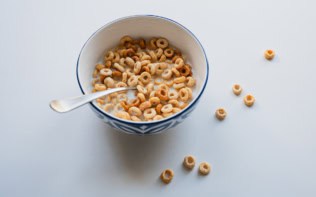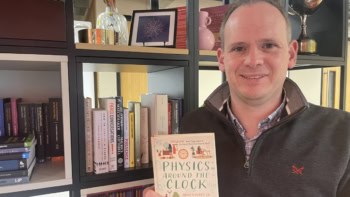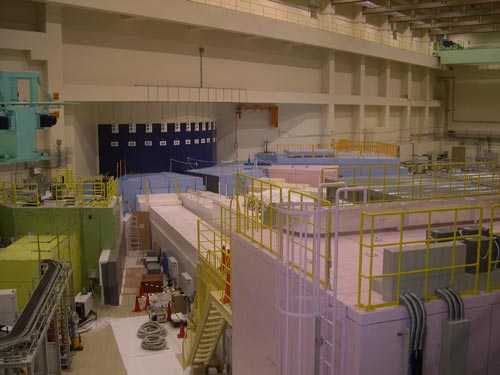
The target station at the Material Life-Science Facility
By Michael Banks
The paint has yet to dry here at the J-PARC experimental complex in Tokai, Japan.
Today I visited the Material Life-Science Facility (MLF), which produces neutrons and muons that are used in a variety of experiments in materials science to biology.
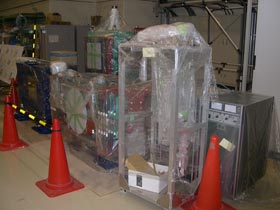
under wraps…for now
At J-PARC, a 3 GeV synchrotron feeds the MLF with a intense beam of protons that are then smashed into a 20 tonne mercury target to produce neutrons.
Theses neutrons are then cooled using a water moderator before being sent to a maximum of 23 experimental stations.
If you like your research equipment brand new, then you have come to the right place. I could not find a single piece of kit that looked used. Even the box containing spanners looked like it had just been opened that morning.
So far 15 instruments at the MLF have been funded by the Japanese government and eight have already been built at a total cost of around $70m.
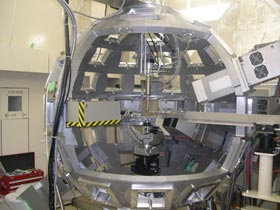
A crystal diffrotometer – the ‘cage’ – for biological samples
The MLF has been operational since May 2008 when it produced its first neutron beam. At the moment, however, the beam has a power of 18 kW, which when fully operational is expected to reach 1 MW (the ISIS neutron source in Oxfordshire, for example, operates at 160 kW).
According to Masatoshi Arai, deputy director of the MLF, training the beam to full power will take around five years to complete.
The MLF has already had its first users. From the 100 proposals submitted last September for beamtime, 10% were from scientists based abroad, 10% from industry and the rest from scientists in Japan.
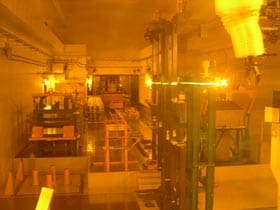
Inside the target chamber
Interestingly, Aria told me that the Japanese government would only fund the MLF if it gave 25% of its beamtime to industry users – a decision that was reached at a meeting in 2000 that lasted until 5am in the morning after a full night of negotiations.
It was not only a great opportunity to walk around the facility and squeeze into all the sample rooms, but I also had the chance to see inside the mercury target chamber.
Once a high-powered beam has been used at the facility, access to the target chamber is strictly off limits due to the increase in radiation levels. Indeed, 1m deep perspex ‘windows’ are used to look into the target chamber.
Aria has spent the last nine years fully focused on getting the facility finished and is now looking forward to returning to his research into superconductivity.
Yet he isn’t quite finished thinking about the next steps for the MLF. “It is early days, but we already have plans for a second target station and then even more experiments,” says Aria.

